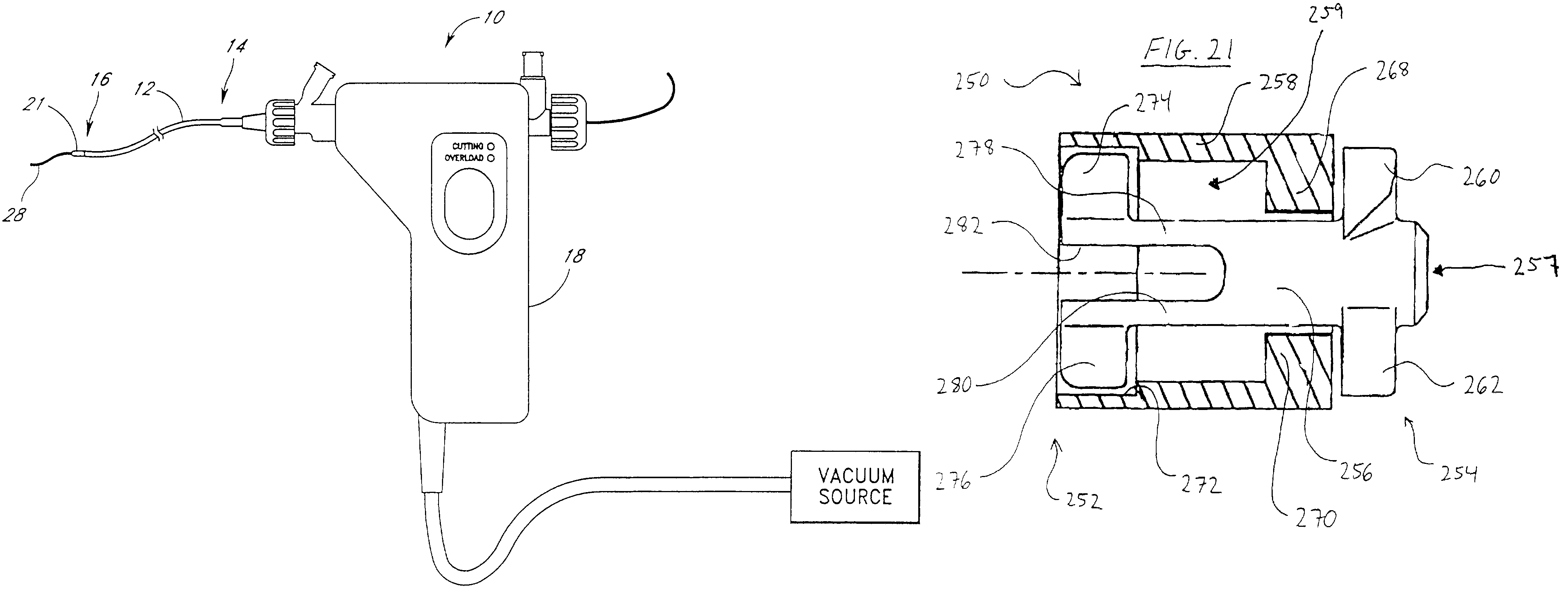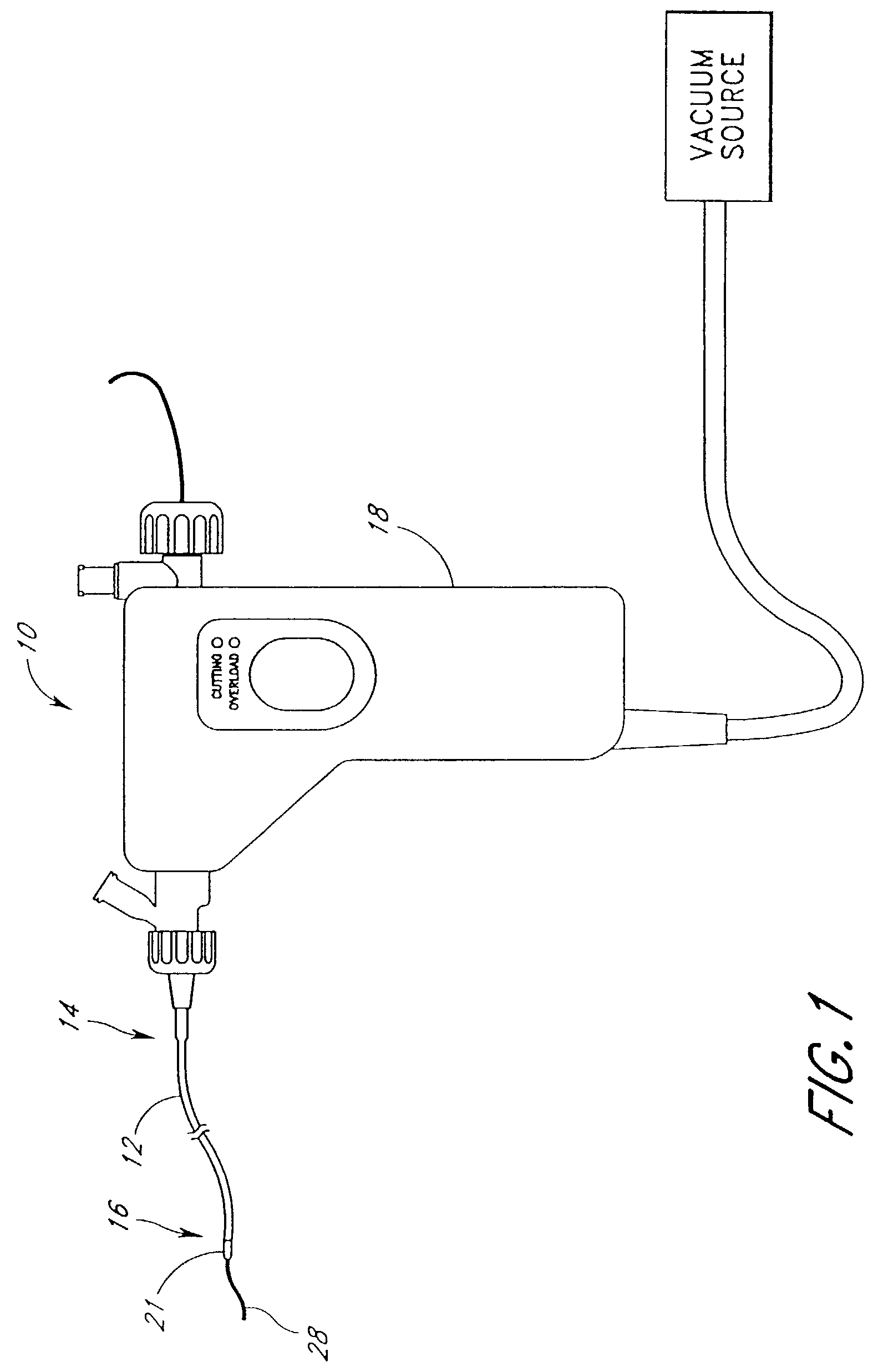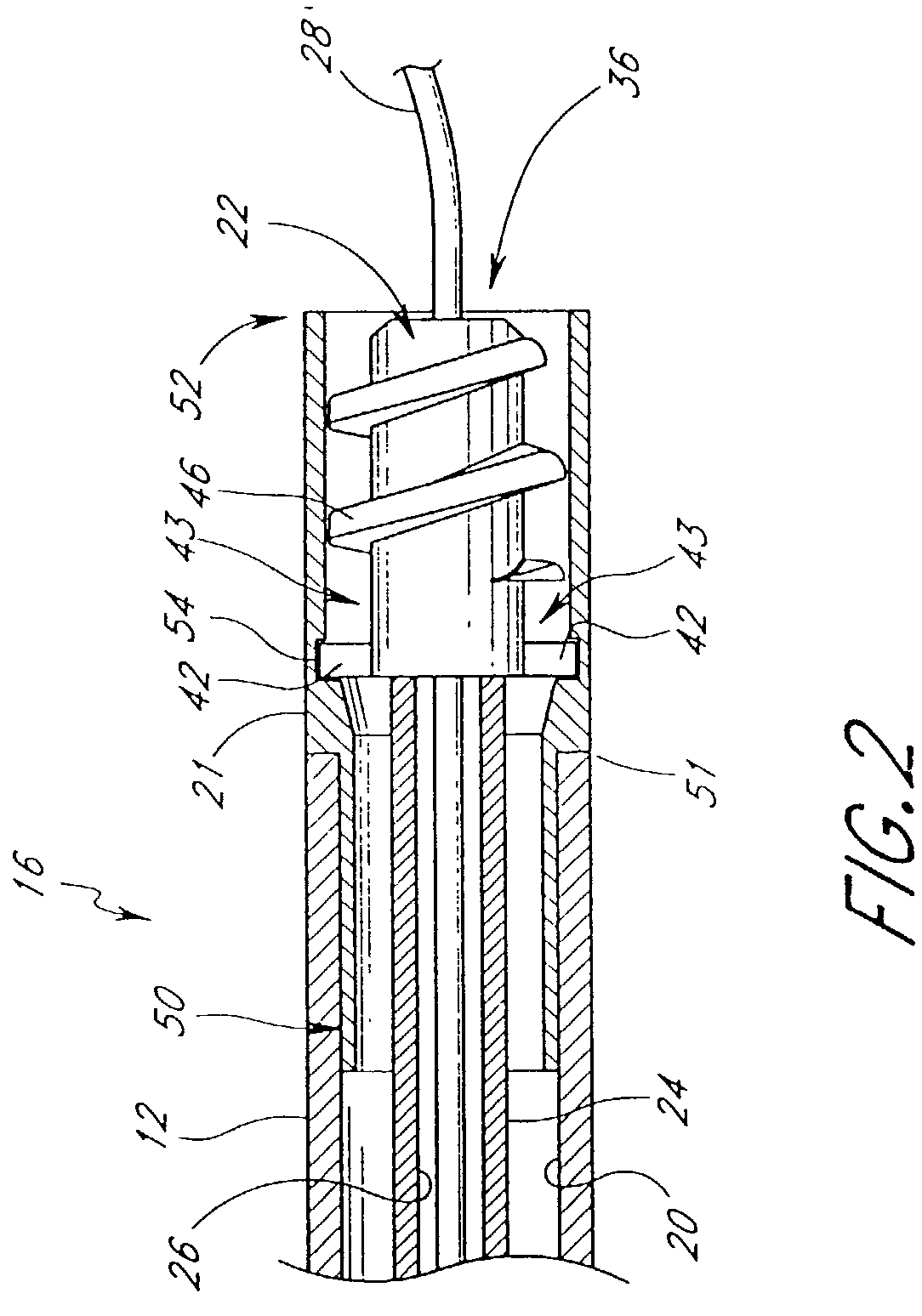Neuro thrombectomy catheter
a catheter and thrombosis technology, applied in the field of thrombosis or atherectomy devices, can solve the problems of limiting the utility of the device, affecting the use of the device, and the length of the portion excised at each pass of the atherectomy blade is necessarily limited to the length of the cavity in the device, so as to achieve sufficient kink resistance and pushability, and small outside diameter
- Summary
- Abstract
- Description
- Claims
- Application Information
AI Technical Summary
Benefits of technology
Problems solved by technology
Method used
Image
Examples
Embodiment Construction
[0049]With reference initially to FIG. 1, a surgical instrument, indicated generally by reference numeral 10 having features, aspects and advantages in accordance with the present invention is depicted therein. In general, the illustrative surgical instrument comprises an elongate flexible tubular body 12 having a proximal end 14 and a distal end 16. A control 18 is preferably provided at or near the proximal end 14 of the tubular body 12 for permitting manipulation of the instrument 10. The control 18 advantageously carries electronic controls and indicators as well as vacuum controls as will be discussed below.
[0050]With reference now to the partially sectioned view of FIG. 2, the tubular body 12 preferably has an elongate central lumen 20. Desirably, the tubular body 12 has a cutter housing 21 for receiving a cutter 22 that may rotate therein. The illustrated cutter 22 is coupled to the control 18 for rotation by way of an elongate flexible drive shaft 24, as will be described be...
PUM
 Login to View More
Login to View More Abstract
Description
Claims
Application Information
 Login to View More
Login to View More - R&D
- Intellectual Property
- Life Sciences
- Materials
- Tech Scout
- Unparalleled Data Quality
- Higher Quality Content
- 60% Fewer Hallucinations
Browse by: Latest US Patents, China's latest patents, Technical Efficacy Thesaurus, Application Domain, Technology Topic, Popular Technical Reports.
© 2025 PatSnap. All rights reserved.Legal|Privacy policy|Modern Slavery Act Transparency Statement|Sitemap|About US| Contact US: help@patsnap.com



